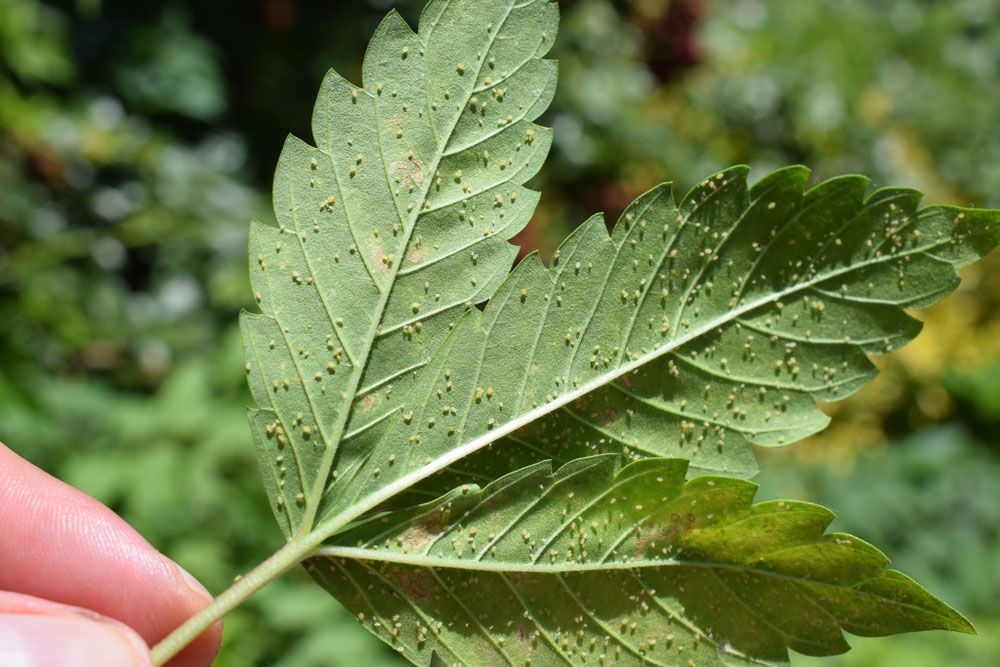
Aphids
Aphids
One of the most prevalent indoor plant pests, Aphids gathers on new growth to suck plant fluids and produce sticky “honeydew.” The white dots on these aphids are the skins they left behind after molting. Aphids are prevalent across the United States.
Description:
Aphids are tiny (1/8 inch long) soft-bodied pear-shaped insects that can be green, brown, yellow, red, or black, depending on species and feeding supply. Adults are usually wingless, although some can develop wings, especially if populations are large. They feature two whip-like antennae at the apex of their heads and a pair of tube-like appendages called cornicles that protrude backward from the back end. Adult aphids are usually wingless; however, most species can be seen with wings, especially when populations are high or in the spring and fall. When the quality of the food supply deteriorates, the pest’s capacity to generate winged individuals allows it to spread to other plants. Aphids are frequently seen in thick clusters on leaves or stems, even though they can be found single. Unlike leafhoppers, plant bugs, and other insects that may be mistaken with them, most aphids do not move quickly when startled.
Life Cycle:
Wingless female aphids emerge from overwintering eggs in the spring and give birth to many nymphs (males are not present). Young nymphs grow steadily in size and give birth to numerous additional nymphs within a week. This procedure is repeated several times, resulting in massive population booms. As the colony expands, a few females develop wings and fly out to form new colonies on different host plants. Late summer and early fall see the development of sexual forms (males and females) that mate and lay overwintering eggs. Every year, there are numerous crossing generations.
Damage caused by aphids:
The extraction of phloem sap for nourishment weakens the plant, causing a metabolic imbalance, leaf bending, and, in extreme situations, leaf loss. Leaf loss has an impact on both the amount and quality of the ultimate yield. They also inject poisons into the plant, affecting its growth on a systemic level. Aphid honeydew is an excellent growing medium for various fungi, which forms a barrier on the leaf, preventing it from absorbing all of the light that strikes it. Aphids, particularly the winged generation, may transfer hundreds of viruses from a sick plant to a healthy plant in seconds. Because there is no cure for viruses, the infection of a plant that is not tolerant or resistant to the virus will certainly decrease ultimate yield.
Control:
There are several methods for controlling aphids in your garden that do not involve hazardous pesticides. Aphids have a variety of natural enemies, such as other insects, and birds, insect larvae, and they move slowly, making them easier to remove by hand or target with sprays. Aphids reproduce fast, thus controlling them may need a mix of treatments as well as recurrent attempts.
Using pesticide:
Chemical insecticides are often absorbed by the leaves and delivered to the tips of the leaves, where aphids love to live. However, because of leaf deformation in infected leaves, pesticides cannot always reach all of the aphids since the leaves create a barrier. The insecticide should be long-lasting to give ongoing protection. Topical pesticides (chemicals absorbed into a plant’s system) circulate via the plant’s vascular system. Beneficial fauna, which will not feed on sap, are often unaffected by these insecticides.
Biological control:
Biological control approaches have been employed effectively against parasitoids (organisms that, unlike parasites, eventually kill their hosts), entomopathogenic fungi (fungi that can kill or seriously disable insects), and insect-eating carnivores. Ladybird beetles (or ladybugs) and lacewings are aphid predators. Aphids are devoured by green lacewing larvae (Chrysoperla sp.).
Various horticultural strategies may be used to avoid or reduce an aphid assault. These are some examples:
- Getting rid of weeds that might act as a breeding ground for eggs and adults.
- Covering crops with bug nets (sometimes treated with pesticides).
- Limiting the usage of nitrogenous fertilizer.
- Crop residue removal.
- Establishing plant species that can act as a predator reservoir (banker plants).
